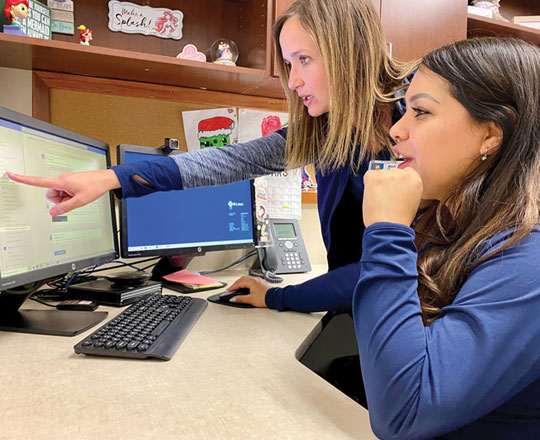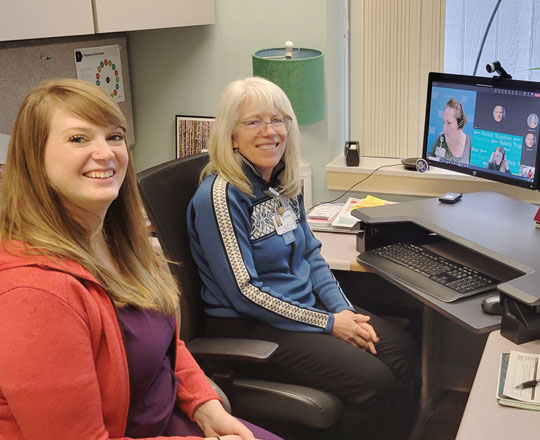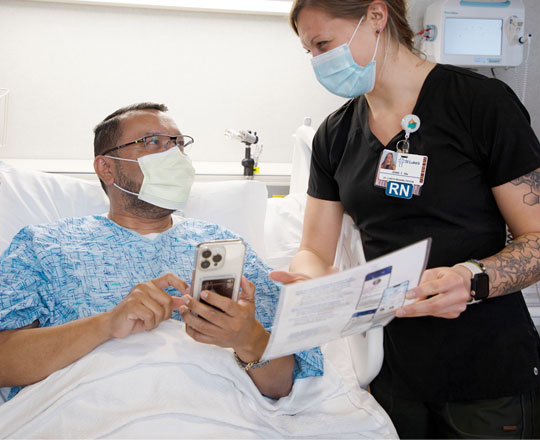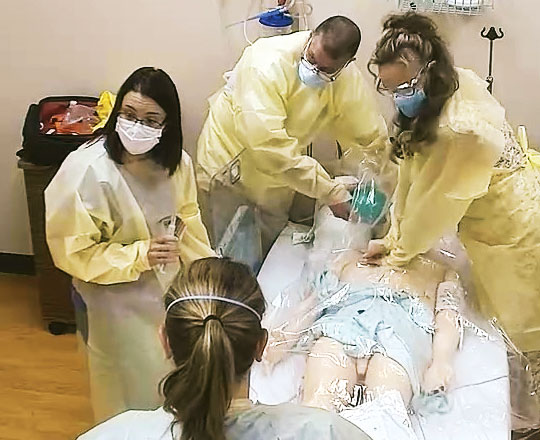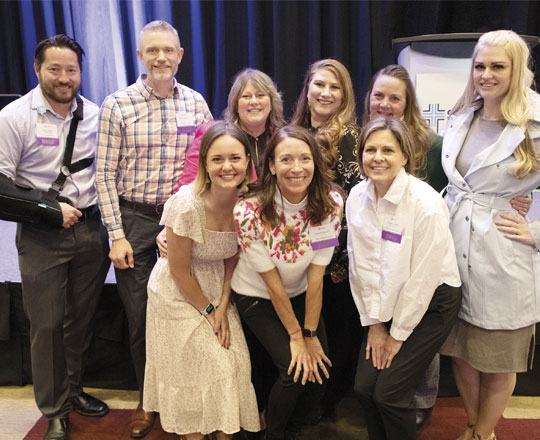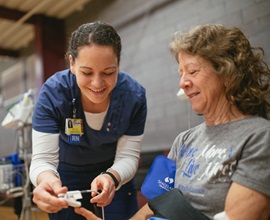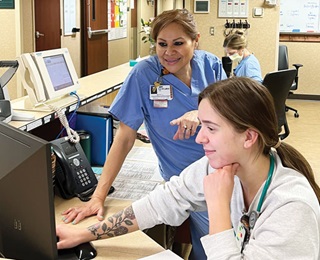
Delirium Education in Wood River Decreases Employee Injury
The most-frequent cause for employee injury on Wood River’s medical-surgical unit results from acutely agitated and delirious patients striking or hurting staff in other ways. Assistant Nurse Manager Jennifer Rablin, BSN, RN, attributed this to staff not using the Richmond Agitation-Sedation Scale/Confusion Assessment Method delirium severity scale scoring tools to identify delirium. They were also not acting to safeguard themselves and their teams to prevent injury.
Through the incident report system, leaders discovered that employees were being struck or injured by delirious patients at a high rate in every department in Wood River; the problem was not isolated. Rablin, along with her leader, Angela Brady, BSN, MHL, RN, NE-BC, and Quality Manager Alecia Gorringe, BSN, MHI, RN, CPHQ, took this issue on as a performance improvement project.
Their priorities were to educate staff on the use of the RASS/CAM tool to identify delirious patients as well as to support the personal safety of individual employees, the safety of the team (situational awareness) and environmental safety. This was accomplished through staff meetings, skills labs, formal education created through a partnership with Clinical Learning and Student Services, and one-to-one discussions. Huddles for all RASS/ CAM-positive patients were initiated to inform the staff to use safety awareness when interacting with the patient.
Wood River has experienced a marked decrease in employee injury since implementation of this delirium project.
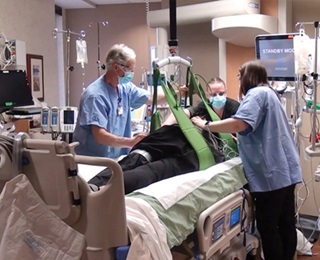
Collaborative Approach Improves Proning Technique in Intensive Care
Moving respiratory patients into a prone position (aka “proning”) has become a mainstay of care in intensive care units. Often these patients are immobile due to multiple lines, tubes and drains. The previous method of manually lifting patients to reposition could take up to 10 staff members and 30 minutes. It also required a lot of PPE and was risky for both patients and staff. St. Luke’s Meridian’s ICU knew there had to be a better way.
Clinical educator Edy Price, BSN, RN, CCRN, and Nurse Director Cari Shuart, MSN, RN, CEN, worked with Dan Babcock from Safe Patient Handling to evaluate methods to prone patients using mechanical lifts. St. Luke’s process was improved by using a multi-strap lifting device (instead of a lift sheet) for better visualization of the patient and a friction-reducing sheet, which requires less effort and further reduces the risk of injury.
A team of ICU staff and clinical educators, including Price, Sandi Attebery, BSN, RN, and Mitchell Friday, CNA, developed a method that only requires three staff members and takes less time than previous methods. An online module that includes a how-to video, test and skill validation has been implemented systemwide.
Using this new method reduces risk of injury to staff, provides better comfort for patients, requires less resources—and is accomplished in a shorter amount of time.
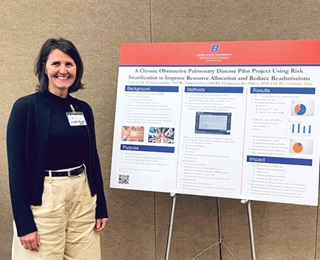
Pilot Program for COPD Patients Reduces Readmissions
Linda Gould, DNP, APRN, FNP-BC, recently completed her doctoral project. The purpose was to apply risk stratification tools to identify higher-risk patients, then prioritize complex, time-consuming interventions and resources.
Patients hospitalized with chronic obstructive pulmonary disease were risk-stratified using the PEARL, a tool designed to gauge patients’ risk for readmission or death. Moderate high-risk patients were referred to specialty nurse practitioners who used real-time interventions and motivational interviewing during intense weekly visits over 30 days. These visits targeted self-management, patient-specific risks and resources.
The result of the project—using risk stratification with patient-specific tertiary preventive care to communicate resource allocation—was that no patients were readmitted or died during the pilot. This project also provided recommendations for expansion throughout the health care facility, processes for other chronic health conditions, budgets, policies for value-based care and ideas for further research.
Gould shared her doctoral project work at the annual Nurse Practitioners of Idaho Conference and at Boise State’s University Graduate Student Showcase. She received a Graduate College Scholar Dean’s Award in the spring 2022 for her work with COPD. During her participation in the Nursing and Patient Care Center of Excellence’s writing workshop, Gould also drafted a manuscript, which is under review for potential publication in the Journal of Advanced Nursing.
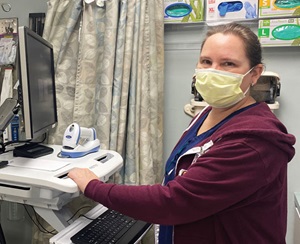
New Technology Saves Lives in Jerome
The clinical staff in Jerome was able to expand the code stroke process to include diagnosis and treatment of patients with acute stroke in early 2022. Prior to this, patients were evaluated and transported to a higher level of care for time-sensitive emergency treatment.
Jerome’s purchase of a new computerized tomography (CT) machine and innovative software using artificial intelligence technology has allowed patients to receive more accurate and timely diagnoses using the code stroke imaging pathway. Staff prepared for the advanced care with multidisciplinary team training and drills on stroke emergencies, which were critical to managing the new process and technology.
A recent case involving a patient presenting to Jerome’s Emergency Department with severe stroke symptoms demonstrates the efficacy of the new process and training. The patient was unable to communicate, yet the team acted swiftly, recognizing the patient’s critical status. The code stroke imaging pathway identified that the patient suffered a catastrophic stroke that converted into a hemorrhagic stroke.
The team promptly transferred the patient to St. Luke’s Boise for neurosurgical treatment. Thanks to quick action and use of the stroke pathway by the team, the patient survived and is working toward recovery.
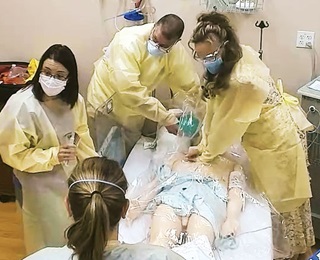
PATHS Project Improves Code Blue Team Process and Boosts Lead’s Confidence
St. Luke’s created its professional development program, Professional Advancement Through High-Performance and Skill (PATHS), to empower and engage clinicians. This is true for crisis nurse Jennifer O’Hara, BSN, RN, CCRN, who identified a problem impacting her work in the Boise hospital.
O’Hara engaged in designing, improving and innovating nursing clinical practice with her project, “The Role of RN Team Lead in Code Blues.” The goal of the project was to improve the performance of code blue teams. Jennifer identified an opportunity in how team members were trained to lead a code and challenges to gaining performance feedback. She searched for evidence and found that simulations, which are one of her favorite ways to learn, are among the most effective ways to train code blue teams.
Working with leaders from various departments, she implemented training and performance tracking. This work led to improvements in team dynamics and increased confidence for nurses fulfilling the team lead role.
“PATHS gave me a way to make changes to policy and practice as a bedside RN,”
O’Hara said. “In order to be a high reliability organization, every member must speak
up for patient safety and believe that they will be heard. I will continue to advocate
for changes that improve patient safety and will encourage other RNs to do the same.”
Download Full Copies of Our Nursing Annual Reports


